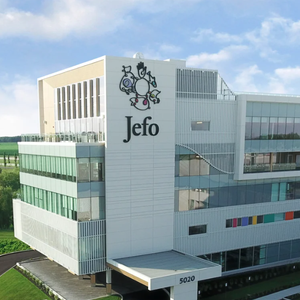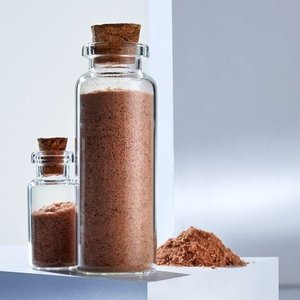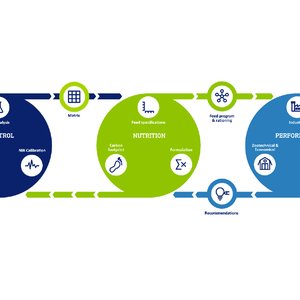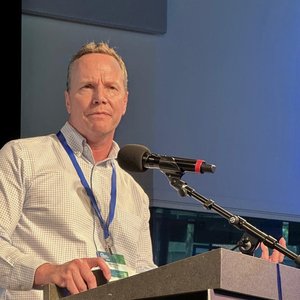GOAL 2007 Conference Further Links Aquaculture, Seafood Sectors
GOAL 2007 brought 250 seafood professionals from 32 countries to Madrid for sessions on production, markets and issues. Photo by Greg Krueger.
Global Outlook for Aquaculture Leadership (GOAL) 2007 repeated the proven chemistry of previous Global Aquaculture Alliance Outlook conferences by connecting aquaculture and seafood industry leaders with key information sources in an inspiring location to generate camaraderie and unity for the further advancement of aquaculture.
The October 30-November 2 GOAL conference brought 250 seafood professionals from 32 countries to Madrid, Spain, for three mornings of focused sessions on global production and markets for fish and shrimp, and productive reviews of current seafood issues.
GAA Assistant Director Sally Krueger said the GOAL participants appreciated the event’s production data summaries and market sessions with a focus on Europe. Expert speakers and issues-oriented panels provided a framework for meaningful discussions that included members of conservation and social justice groups.
“This meeting was unique in the linkages it helped build between shrimp and fish sectors, American and European markets, and industry and nongovernmental organizations,” GAA President George Chamberlain said. “It was a unifying event that positions the industry for continued sustainable growth.”
Respected economist Dr. James Anderson of the University of Rhode Island projected continued growth for the farmed shrimp sector through 2008. Anderson said the biggest challenges facing shrimp farmers include increasing energy and feed costs, low market prices, trade barriers and disease risks.
In a production report on a spectrum of internationally traded finfish, Dr. Ragnar Tveteras of the University of Stavanger said most species have seen dramatic production increases over the past five years, but not the typical associated price declines. Tilapia and Pangasius had the highest growth in volume, with salmon and sea bass following.
Beginning the sessions on the European Union’s seafood markets, Mary Larkin of Diversified Business Communications noted that increasing seafood consumption in the E.U. is a result of concerns over food safety in meat and poultry and the importance of sustainability to E.U. consumers. In a follow-up panel discussion, the primary message was that countries in the E.U. operate differently when it comes to culinary matters. For example, wild seafood commands a premium over farmed product in Italy, while no such distinction is made in Germany.
After Kunio Shirasu of Nippon Suisan Kaisha, Ltd. reported a declining demand for farmed seafood in Japan, AIS Aqua Foods’ Andrew Kaelin gave an overview of China’s markets. He indicated seafood exports are declining as more seafood is consumed in that country. To deal with food safety, China has adopted a “one strike” policy that effectively suspend a plants’ HACCP certificates if they ship product that contains banned chemicals.
After Kunio Shirasu of Nippon Suisan Kaisha, Ltd. reported a declining demand for farmed seafood in Japan, AIS Aqua Foods’ Andrew Kaelin gave an overview of China’s markets. He indicated seafood exports are declining as more seafood is consumed in that country. To deal with food safety, China has adopted a “one strike” policy that effectively suspends plants’ HACCP certificates if they ship product that contains banned chemicals.
In a look at the United States retail sector, Joe Bundrant of Trident Seafoods noted that the explosive growth in seafood consumption of the 1970s and 1980s has moderated. However, fresh and frozen seafood now outpace canned products, and surimi-based items reflect impressive growth.
Roger Bing of Darden Restaurants said U.S. restaurant customers are responding to restaurant operators’ rising costs and menu prices by dining out less frequently. Aquaculture remains an attractive source of seafood, thanks to quality, supply and traceability; but the proliferation of labels and certification programs challenge foodservice operators.
In his brilliant keynote address on the evolution of salmon farming, former Marine Harvest CEO Atle Eide pointed out the continuing consolidation in aquaculture. In 1990, there were 750 salmon farmers in Norway. Today, the industry is dominated by 20 companies, Eide said. He predicted that in the future, 90% of the world’s production of salmon will be controlled by 10 companies, as producers look at farming other species and new markets in Europe and South America.
The third day of GAA’s GOAL 2007 conference offered a comprehensive look at aquaculture industry issues. Drs. Edel Elvevoll, Jan Kwakman and Huub Lelieveld discussed health benefits, safety concerns and regulations that affect seafood. The crux of their message was clear: Don’t let regulations hinder the health benefits of seafood consumption.
Dr. Viggo Halseth of Skretting outlined growing aquafeed constraints and pointed to promising options for feed producers to continue reducing their use of fishmeal and fish oil. Bioenergy will be a new competitor for available raw materials.
In a closing panel discussion – which featured panel members from GlobalGAP, Naturland, Seafood Choices Alliance, World Conservation Union and GAA’s Best Aquaculture Practices program – participants supported a move toward fewer, more centralized standards for aquaculture facilities.
GOAL 2008 will be held in China. A GAA site selection team will visit the country in early 2008 to choose a host city. GOAL 2007 participants will receive 2008 conference mailings as they become available.
For additional information on Global Outlook for Aquaculture Leadership and other GAA programs, contact the Global Aquaculture Alliance:homeoffice@gaalliance.org.











